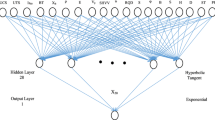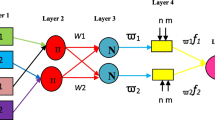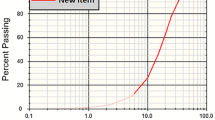Abstract
In the rock blasting scenario, the success of fragmentation plays a major role. Prediction of blasted rock mass fragmentation has a significant role in the overall economics of opencast mines. Blast fragmentation has a direct impact on efficiency and cost of operation consisting of loading, transport and crushing. Tropical weathering has a direct impact on rock mass properties and strength of rock. Thus, challenging issues are created for blastability of tropically weathered limestone.
It is necessary to analyze the blast fragmentation and optimize the blasting parameters. Selected limestone mine for this study is in Thailand. Various rock mass properties such as GSI, RMR, and stemming length were studied to find out the correlation with rock fragmentation. Stiffness ratio, hole diameter to burden ratio, powder factor, maximum charge per delay, RQD, blastability index (BI), weathering index (WI) and mean block size were input parameters to analyse mean rock fragment size.
Total 105 data sets were collected. In this paper, a hybrid model with Artificial neural network (ANN), Particle swarm optimization (PSO) known as PSO-ANN was implemented to analyse the blast fragmentation. Multivariate regression Analysis (MVRA) was also performed. 83 datasets were trained and balance data sets were utilised for testing data. R2 values for training with PSO-ANN and MVRA showed 0.818 and 0.657 respectively. R2 values for testing with PSO-ANN and MVRA showed 0.70 and 0.694 respectively. Thus the hybrid model PSO-ANN was found useful to predict fragmentation.
Access this chapter
Tax calculation will be finalised at checkout
Purchases are for personal use only
Similar content being viewed by others
References
Sereshki F, Hoseini SM, Ataei M (2016) Blast fragmentation analysis using image processing. Int J Min Geo-Eng 50(2):211–218
Kanchibotla S, Valery W, Morrell S (November 1999) Modelling fines in blast fragmentation and its impact on crushing and grinding. In: Explo 1999–A conference on rock breaking, The Australasian Institute of Mining and Metallurgy, Kalgoorlie, Australia, pp 137–144
Bhatawdekar RM, Mohamad ET, Singh TN (2017) Selection of Lidar technology for limestone quarries in Thailand. J Mines Met Fuels 65(7):393–399
Bhatawdekar RM, Mohamad ET, Singh TN, Armaghani DJ (2019) Drilling and blasting improvement in aggregate quarry at Thailand-a case study. J Mines Met Fuels 67:357–362
Hasanipanah M, Naderi R, Kashir J, Noorani SA, Qaleh AZA (2017) Prediction of blast-produced ground vibration using particle swarm optimization. Eng Comput 33(2):173–179
Trivedi R, Singh TN, Gupta N (2015) Prediction of blast-induced flyrock in opencast mines using ANN and ANFIS. Geotech Geol Eng 33(4):875–891
Thornton D, Kanchibotla SS, Brunton I (2002) Modelling the impact of rock mass and blast design variation on blast fragmentation. Fragblast 6(2):169–188
Akbari M, Lashkaripour G, Bafghi AY, Ghafoori M (2015) Blastability evaluation for rock mass fragmentation in Iran central iron ore mines. Int J Min Sci Technol 25(1):59–66
Hagan TN (1995) The effect of rock properties on the design and results of tunnel blasts. J Rock Mech Tunn Technol 1(1):25–39
Kılıccedil AM, Yaşar E, Erdoğan Y, Ranjith PG (2009) Influence of rock mass properties on blasting efficiency. Sci Res Essays 4(11):1213–1224
Singh P, Narendrula R (2007) The influence of rock mass quality in controlled blasting. In: Proceedings of the 26th International Conference on Ground Control in Mining, pp 314–319
Prasad S, Choudhary BS, Mishra AK (August 2017) Effect of stemming to burden ratio and powder factor on blast induced rock fragmentation–a case study. In: IOP Conference Series: Materials Science and Engineering, vol 225, no 1, p 012191. IOP Publishing
Sharma A, Mishra AK, Choudhary BS, Meena R (2019) Impact of blast design parameters on rock fragmentation in building stone quarries. Curr Sci (00113891) 116(11): 1861–1867. Research paper
Hasanipanah M, Armaghani DJ, Monjezi M, Shams S (2016) Risk assessment and prediction of rock fragmentation produced by blasting operation: a rock engineering system. Environ Earth Sci 75(9):808
Kulatilake PHSW, Qiong W, Hudaverdi T, Kuzu C (2010) Mean particle size prediction in rock blast fragmentation using neural networks. Eng Geol 114(3–4):298–311
Hasanipanah M, Amnieh HB, Arab H, Zamzam MS (2018) Feasibility of PSO–ANFIS model to estimate rock fragmentation produced by mine blasting. Neural Comput Appl 30(4):1015–1024
Bahrami A, Monjezi M, Goshtasbi K, Ghazvinian A (2011) Prediction of rock fragmentation due to blasting using artificial neural networks. Eng Comput 27(2):177–181
Palmstrom A (2005) Measurements of and correlations between block size and rock quality designation (RQD). Tunn Undergr Space Technol 20(4):362–377
Lilly P (October 1986) An empirical method of assessing rock mass blastability. In: Large Open Pit Mine Conference, Newman, Australia, pp 89–92
Tiile RN (2016) Artificial neural network approach to predict blast-induced ground vibration, airblast and rock fragmentation. Missouri University of Science and Technology
Lawal AI, Idris MA (2020) An artificial neural network-based mathematical model for the prediction of blast-induced ground vibrations. Int J Environ Stud 77(2):318–334
Asl PF, Monjezi M, Hamidi JK, Armaghani DJ (2018) Optimization of flyrock and rock fragmentation in the Tajareh limestone mine using the metaheuristics method of firefly algorithm. Eng Comput 34(2):241–251
Kennedy J, Eberhart RC (1995) Particle swarm optimization. In: Proceedings of IEEE International Conference on Neural Net-works, Perth, Australia, pp 1942–1948
Rukhaiyar S, Alam MN, Samadhiya NK (2018) A PSO-ANN hybrid model for predicting the factor of safety of slope. Int J Geotech Eng 12(6):556–566
Abdi MJ, Giveki D (2013) Automatic detection of erythemato-squamous diseases using PSO–SVM based on association rules. Eng Appl Artif Intell 26:603–60840
Hajihassani M, Armaghani DJ, Sohaei H, Mohamad ET, Marto A (2014) Prediction of airblast-overpressure induced by blasting using a hybrid artificial neural network and particle swarm opti-mization. Appl Acoust 80:57–67
Hasanipanah M, Noorian-Bidgoli M, Armaghani DJ, Khamesi H (2016) Feasibility of PSO-ANN model for predicting surface settlement caused by tunnelling. Eng Comput 32(4):705–715
Author information
Authors and Affiliations
Corresponding author
Editor information
Editors and Affiliations
Rights and permissions
Copyright information
© 2022 The Author(s), under exclusive license to Springer Nature Singapore Pte Ltd.
About this paper
Cite this paper
Bhatawdekar, R.M., Kumar, D., Changtham, S., Pathak, D., TrilokNath, S., Mohamad, E.T. (2022). Intelligent Technique for Prediction of Blast Fragmentation Due to the Blasting in Tropically Weathered Limestone. In: Verma, A.K., et al. Proceedings of Geotechnical Challenges in Mining, Tunneling and Underground Infrastructures. ICGMTU 2021. Lecture Notes in Civil Engineering, vol 228. Springer, Singapore. https://doi.org/10.1007/978-981-16-9770-8_53
Download citation
DOI: https://doi.org/10.1007/978-981-16-9770-8_53
Published:
Publisher Name: Springer, Singapore
Print ISBN: 978-981-16-9769-2
Online ISBN: 978-981-16-9770-8
eBook Packages: EngineeringEngineering (R0)




